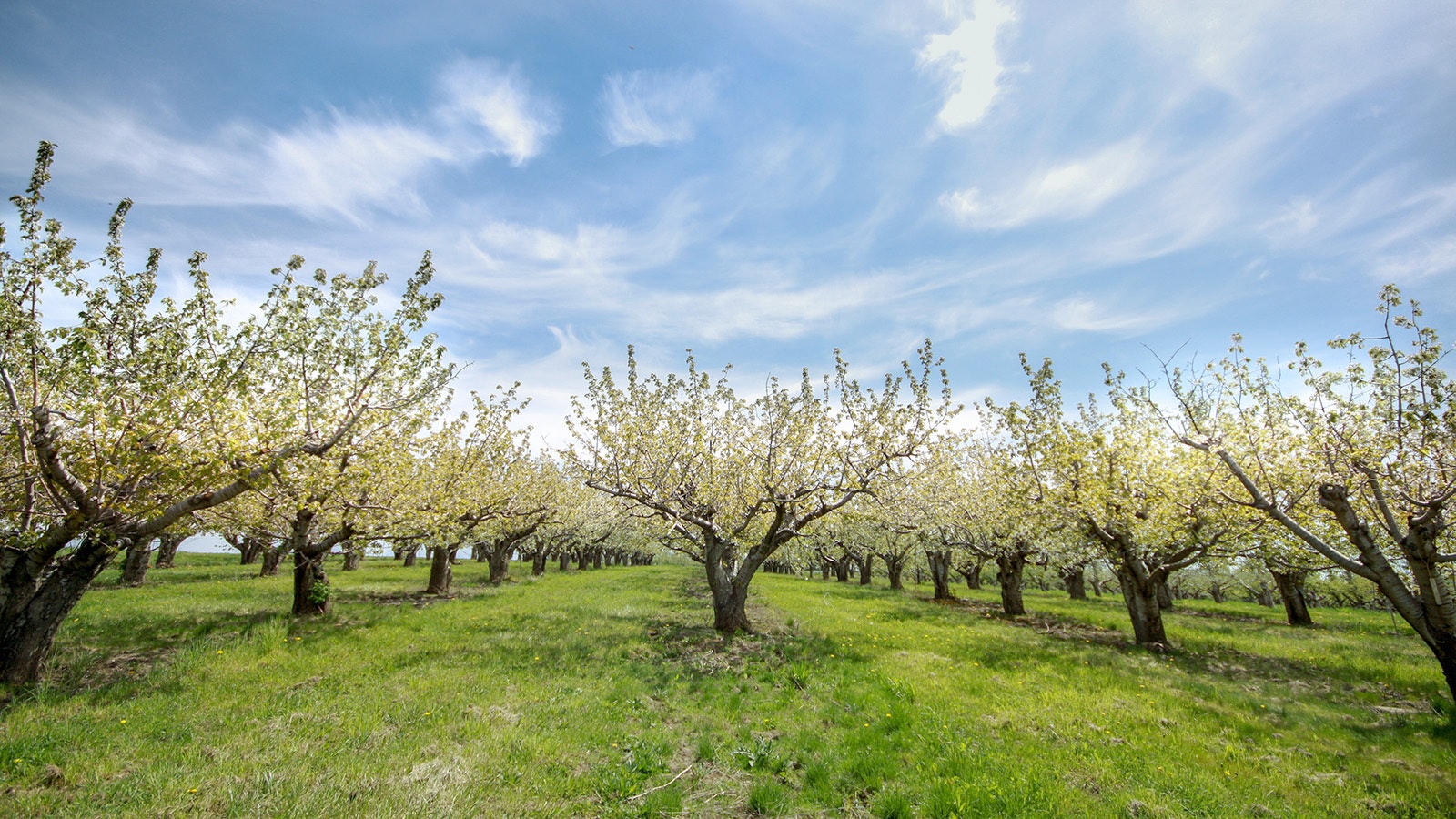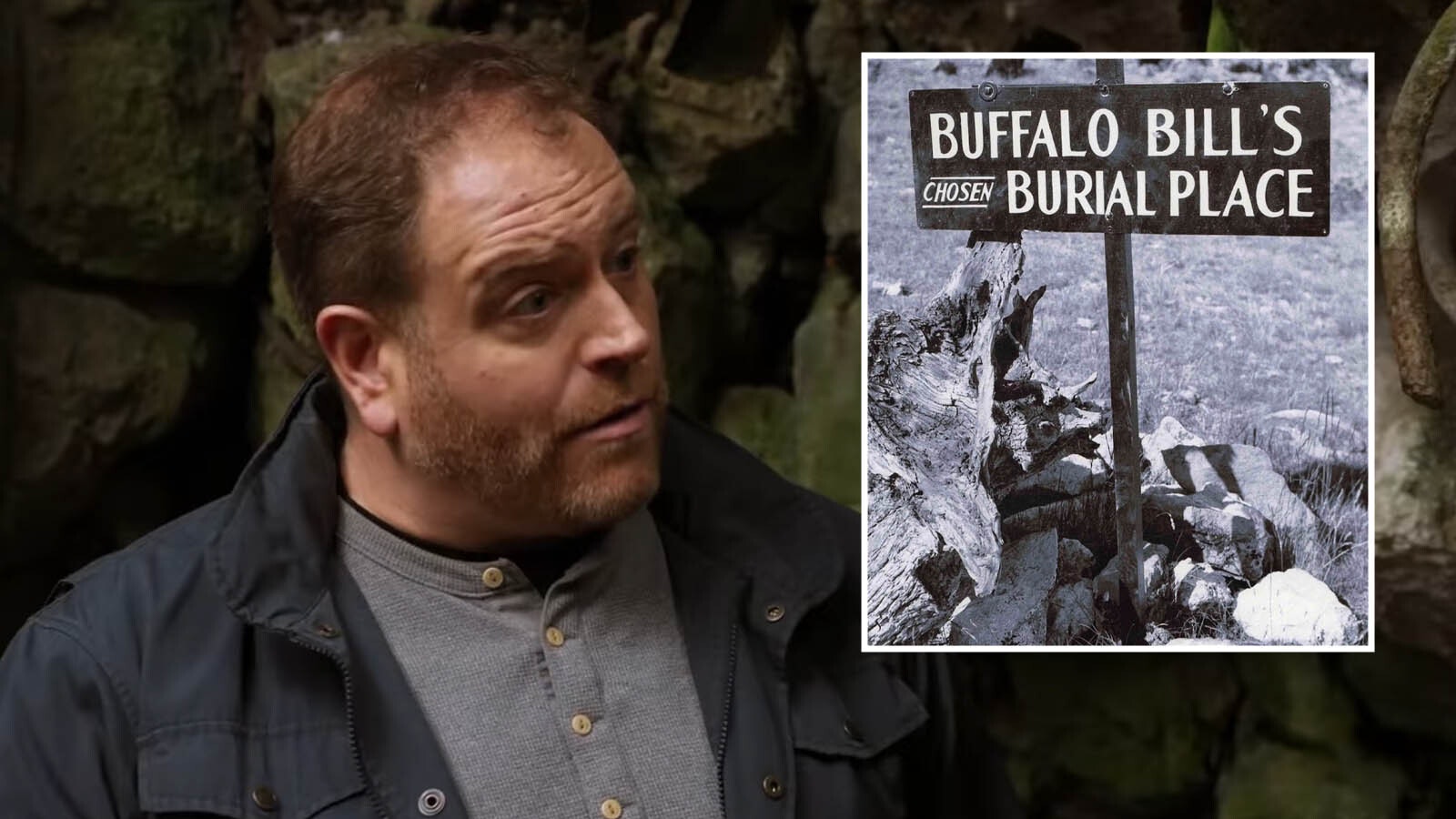Trees and shrubs in Wyoming have been on a roller coaster ride this spring with temperatures reaching 79 degrees April 12 — 55 degrees hotter than the week before on April 4, when the high was just 24.
By April 14, temperatures had settled back down to 42, and by April 20, snow was blowing around again for two or three days, bringing lows in the shivering teens.
“That’s springtime in the Rockies,” said Cowboy State Daily meteorologist Don Day.
Extreme temperature fluctuations like that do pose particular problems for lots of plants, but they are a particular pain for would-be fruit tree growers in the Cowboy State.
“You can grow peaches and apricots and all kinds of fruit in a lot of Wyoming,” Cheyenne Botanic Gardens founder Shane Smith told Cowboy State Daily. “But you’re going to be lucky to get a crop once every five to eight years, if even that, because we get all nice and warm, 80 degrees, and then all of a sudden it’s below freezing, and the blossoms freeze off.”
Smith recommends Wyoming growers choose late-blooming varieties, raising the chance for blooms to escape getting pinched off by late spring frosts.
Late springs frosts are not as big a deal for leaves as they are for blossoms. Most trees have a secondary flush of leaf buds that wake up later, so will still leaf out, even if frost gets the first wave.
“That’s not to say there isn’t some damage done by a late (hard) frost,” Smith said. “A light frost isn’t too big of a deal. It’s a matter of how long it’s cold. If it’s down to 22 degrees, but it’s only for an hour before the sun comes up, that may not be as bad. But if it’s down to 22 degrees at 11 o’clock at night and stays there all night, then the damage is much worse.”
They’re Just Chilling Out
How do trees know it’s time to wake up?
This is a question science is still trying to answer, but the most recent research suggests a genetic component, which can vary from one tree to the next.
Dormancy, meanwhile, is a better understood mechanism. Trees can tell that fall is coming thanks to light-sensitive chemicals called phytochromes.
These photosensitive chemicals have two states, active and inactive. During the day, red light activates the phytochromes, a bit like turning on a light switch. Once dark, the activated phytochromes become inactive. That triggers production of a plant hormone called abscisic acid.
The more hormone, the longer the night.
When there’s enough abscisic acid floating around, the tree knows the nights are long enough that it’s time to get ready for winter. Cue the pretty colors of fall, which signal that green chlorophyll is disappearing from the leaves, sugars are going down to the roots and the tree is readying itself for a long winter nap.
Once fully dormant, trees won’t wake up even if it becomes unseasonably warm for a long period of time. That’s because it takes a certain amount of what’s called “chill” time, where temperature lie between 44 and 30 degrees, before the tree can wake again. That protects the tree from being fooled by unseasonably warm fall temperatures.
Chill time is also why a maple tree that is adapted to say, Missouri, doesn’t break dormancy if transplanted in the deep south. It needed more chilling.
Once the requisite chilling time has passed, however, then warmer temperatures matter, and that’s what makes a Wyoming spring so tricky, particularly for fruit trees.
Trees In Wyoming Are Behind Schedule
Thanks to colder-than-usual temperatures this March and April, many trees in Wyoming appear to be about two weeks behind schedule this year, Day said.
“Anecdotally, I have this apple tree that we are finding — it’s been quite productive — and usually by this time of year, I can see the leaf-out enough to see if there’s blooms coming in,” Day said. “But it’s not out enough for me to see that yet. It’s the 10th, so that does seem like it’s a little behind.”
Day said there will likely still be a few frosts between now and June 1.
“Getting past Mother’s Day weekend will be important,” Day said. “And then there’s Memorial Day weekend. You never know what you’re going to get then.”
Altitude also has an effect on how the weather feels to plants, Day added.
“For every 1,000 feet of altitude, I think it’s as much as I think three degrees latitude,” he said. “The higher you are, the more north the climate is.”
Day has a niece in Loveland, Colorado, which in his experience is typically about two weeks ahead of blooms in Wyoming.
“She sent me a picture today of all of her crab apple blooms,” he said.
That could mean about two more weeks for blooms to start appearing, just ahead of that tricky Memorial Day weekend.
How To Beat Spring in Wyoming
Smith recommends avoiding big box stores for buying shrubs and trees and sticking with local nurseries instead.
“The trouble with buying trees at big box stores is they tend to sell whatever corporate headquarters tell them to sell,” Smith said. “So they’re selling the same stuff that they sold to a Walmart in Michigan as they are a Walmart in Wyoming.”
Nurseries are generally much more knowledgeable about which particular trees and shrubs are good for the local areas they serve.
“Locally owned nurseries don’t stay in business very long if they’re carrying trees that aren’t suitable, and most all of them do carry the right trees,” Smith said. “So the price may be a little bit higher, but you’re paying for that knowledge from the nursery owner to benefit your own yard.”
Variety-wise, Smith recommends apples as the most compatible fruits for Wyoming’s changeable springs. The Cheyenne Botanic Gardens suggests these varieties: Cortland, Duchess of Oldenburg, Golden Delicious, Haralson, Honeycrisp, Joyce, Redstone Canyon Gold, State Fair and Zestar.
“Some of (the recommendations) are based on the research at the old Cheyenne High Plains horticultural research station,” Smith said. “It’s not a research station for horticulture anymore, but they came up with four or five recommended apple varieties.”
More Things To Know
Another consideration in choosing a fruit tree is the length of time it takes to mature and bear fruit. Dwarf fruit trees can begin production in as little as three to five years, while a full-size tree might take 11.
“That’s a big decision-maker that sometimes people don’t know about,” Smith said. “It’s also a lot easier to harvest off a dwarf or semi-dwarf tree.”
Other trees that tend to produce dependably in Wyoming are sour cherries and plums, Smith said.
Peach trees, though popular, are problematic because most bloom far too early. Two varieties that Smith says will give an occasional crop in Wyoming are Contender and Reliance, which bloom a bit later.
Shrubs are something else Smith often recommends to those wanting to grow fruits in Wyoming.
“People don’t think about shrubs, but they really have an advantage because they can provide privacy,” he said. “They provide habitat that birds love. They can be used to create (outdoor) rooms and they can take the place of fences. With the right landscaping, you can make a small space feel big or a big space look small.”
Among shrubs he highly recommends is the Mock Orange, bred at the High Plains Horticulture Research Station.
“It’s super hardy and smells like orange blossoms for about three weeks,” he said. “Plant that outside your bedroom window and you’ll wake up to oranges.”
Renee Jean can be reached at: Renee@CowboyStateDaily.com





